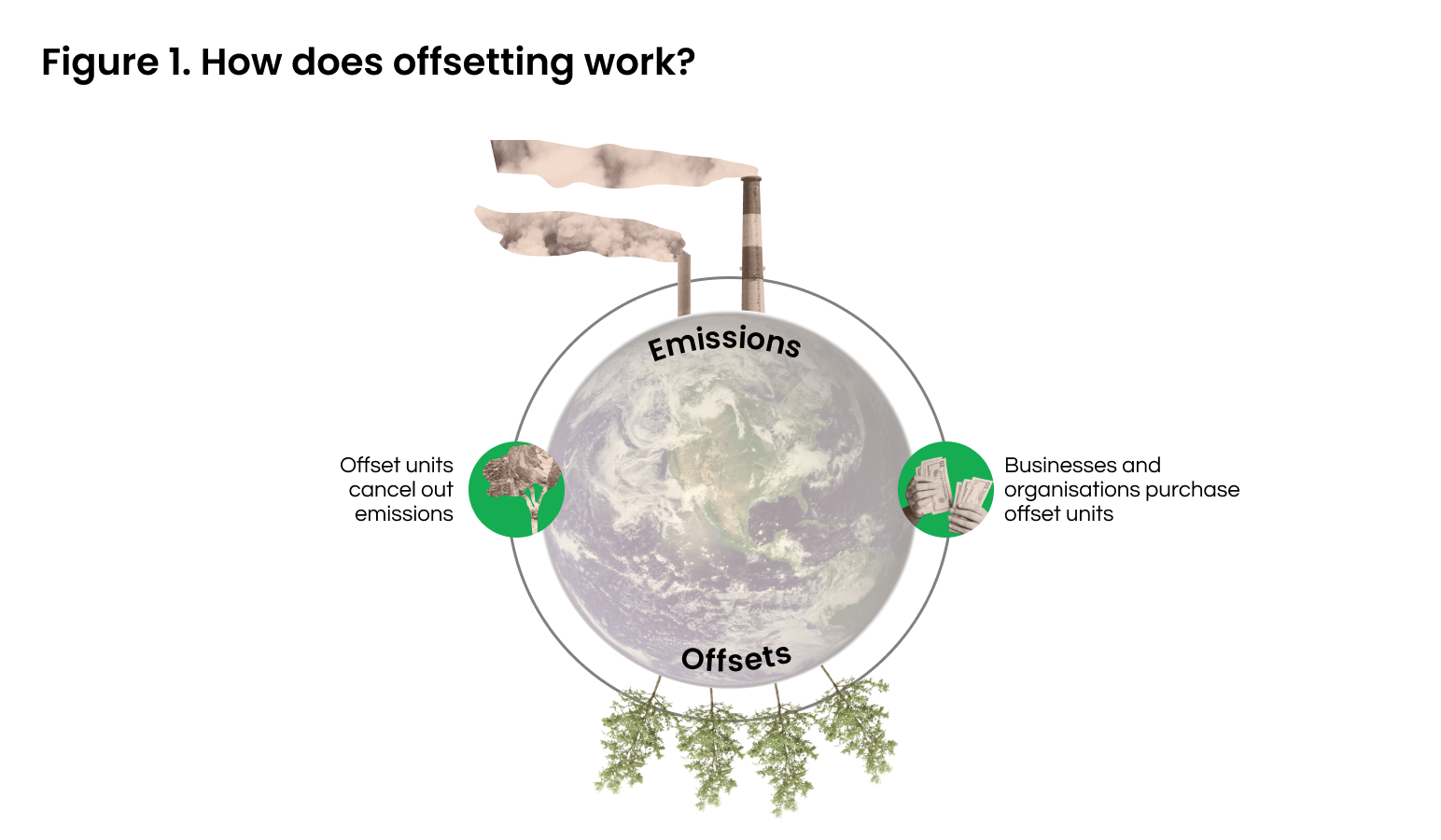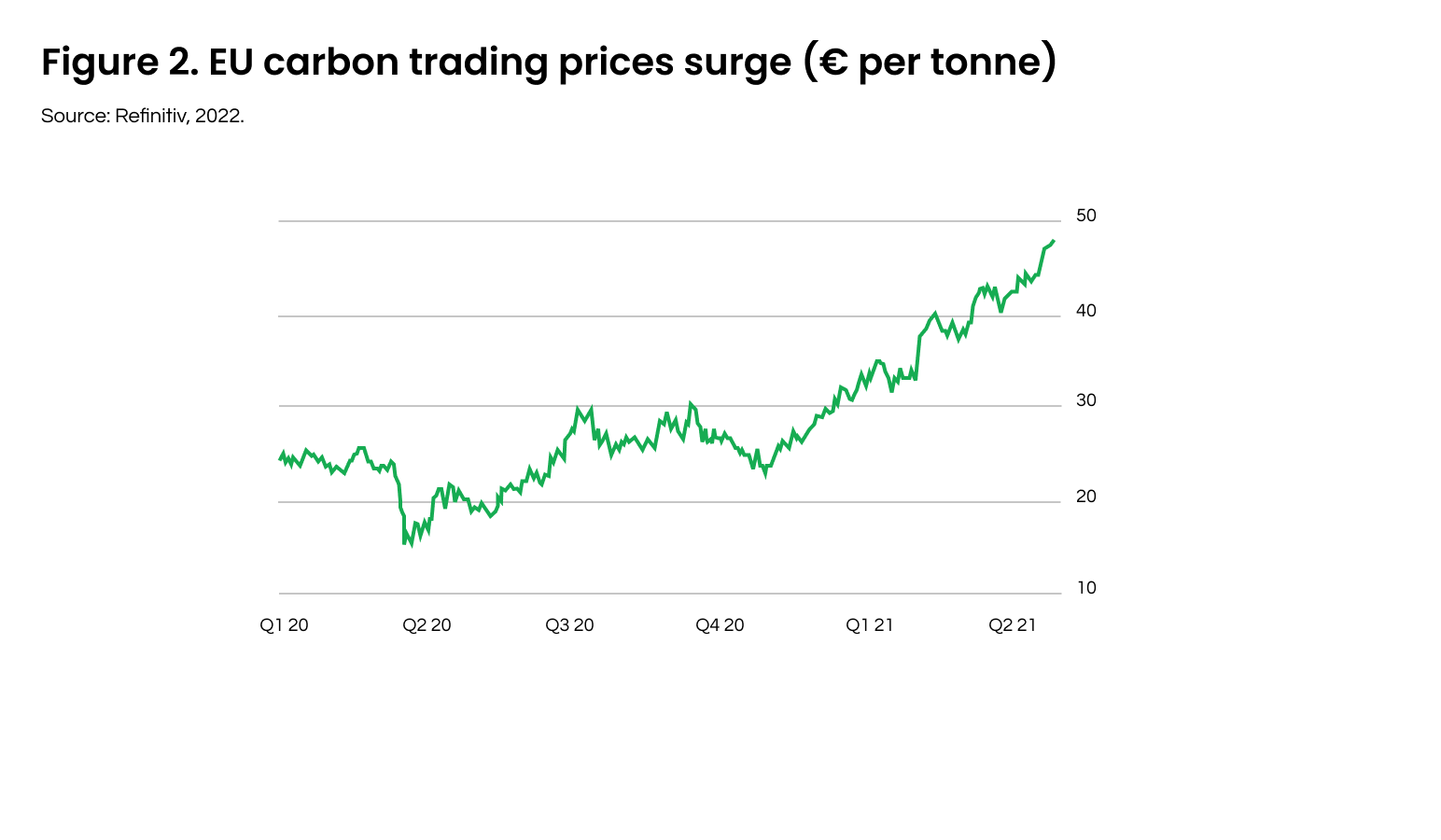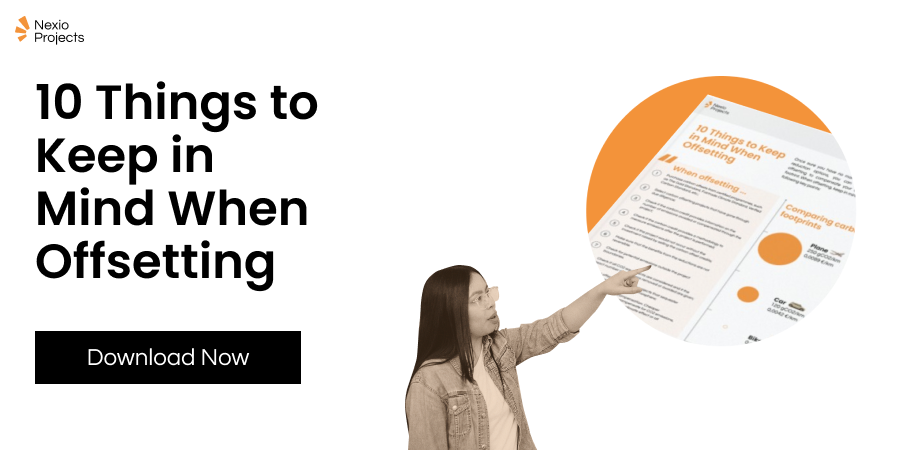A Guide to Carbon Offsetting

A box of carbon neutral bananas in a Dutch supermarket, a carbon neutral holiday with flight included, carbon neutral law-firms and carbon-neutral transport; how can things that emit greenhouse gas emissions, be carbon neutral? That’s where carbon offsets, or carbon credits, come in.
What's a carbon offset?
Companies and individuals can invest in environmental projects around the world to compensate for their own (unavoidable) emissions. A carbon offset is an avoidance, reduction, or removal of greenhouse gas emissions, which compensates for emissions made elsewhere. Offsets are measured in tonnes of carbon dioxide equivalent (tCO2e) reduced or removed from the atmosphere. One carbon offset represents one ton of carbon dioxide or its equivalent in other greenhouse gases.

Types of carbon offsets: planting trees or avoiding forest fires
There are two categories of offset projects. Avoidance and reduction projects, and removal projects. Avoidance and reduction projects are ones where emissions are avoided or mitigated. For example, replacing greenhouse gas emitting wood stoves in family homes with efficient biogas cookstoves. Or supplying a village with renewable energy from locally owned windmills. Another avoidance project is the prevention of deforestation. Removal projects on the other hand, support the capture and sequestration of greenhouse gas emissions, for example by planting trees or sucking CO2 out of the air.
Who came up with the idea of carbon offsets?
The first carbon offset project was done in 1989, by an American electric power company, that wanted to finance an agro-forest in Guatemala to offset the emissions by their new coal-fired power plant. In 1997, The Kyoto protocol, an international treaty mandated industrialised countries to limit and reduce greenhouse gas emissions, included carbon offsets into their plan. The main idea was that as greenhouse gases emitted into the atmosphere quickly spread worldwide, so in theory it doesn’t matter where the carbon is emitted – or removed. Thus higher-income countries could purchase carbon credits from other countries, and thereby compensate their emissions. Nowadays, the Kyoto protocol expired and was replaced by the Paris agreement which holds on to stricter emission reductions for all countries. This results in less carbon trading opportunities, as lower- and middle-income countries first must reach their own carbon targets and can only trade ‘leftover credits.’

Who can use carbon offsets?
Carbon offsets can be used in a voluntary or compliance market. The voluntary market applies to individuals, companies, or other organisations that purchase carbon offsets to mitigate their greenhouse gas emissions. A person or organisation can choose to offset a single service, like a flight, or offset for all emissions to reach carbon neutrality or net-zero. Within the voluntary market, there are different certification programmes (e.g., The Gold Standard; Fairtrade Climate Standard; Verified Carbon Standard; Climate, Community and Biodiversity; Puro Standard; Climate Action Reserve) which provide standards, guidance, and requirements for project developers to ensure that the carbon offset credits meet quality standards. As different labels have different standards, prices per carbon credit can vary widely. For example, a flight from Amsterdam to Barcelona can be compensated for different prices ranging from 3,45 euro at TreesforAll to 6 euros at biogas-switcher Hivos.
 In compliance market like the European Union Emission Trading Scheme, companies, governments, or other entities buy carbon offsets to meet mandatory and legally binding limits on the total amount of CO2e they are allowed to emit per year. If they do not meet these agreements, it will result in fines or legal penalties. However, following the Paris Agreement and starting from 2020, companies in the EU Emission Trading Scheme are not allowed anymore to use carbon credits to cover their emissions (read more here). The reason is that more effort should be put into reducing greenhouse gas emissions within the company’s own value chain, to reach global emission reductions.
In compliance market like the European Union Emission Trading Scheme, companies, governments, or other entities buy carbon offsets to meet mandatory and legally binding limits on the total amount of CO2e they are allowed to emit per year. If they do not meet these agreements, it will result in fines or legal penalties. However, following the Paris Agreement and starting from 2020, companies in the EU Emission Trading Scheme are not allowed anymore to use carbon credits to cover their emissions (read more here). The reason is that more effort should be put into reducing greenhouse gas emissions within the company’s own value chain, to reach global emission reductions.
The Science-Based Targets Initiative agrees with this and to reach net-zero targets, companies are required to reach 90-95% of decarbonization across all scopes before 2050. When a company reaches its net-zero target, only the limited number of residual emissions (5-10% max) can be neutralised with carbon removals by offsetting. Furthermore, the Science-based target initiative points specifically to offsets that remove carbon from the atmosphere, not those that avoid emissions. Although offsetting to reach Science-Based Targets is not an option, it is possible to offset emissions for companies wanting to go the extra mile and finance additional emission reductions beyond their set targets. However, these investments are not a substitute for a company’s own emission reductions and cannot count towards the 90%+ reduction.
Offsetting: an opportunity or pitfall?
Although the aim of carbon offsetting is a more equal and globally shared responsibility of lowering greenhouse gas emissions, many argue that offsetting is unhelpful (or even counterproductive) in the fight against climate change. There are multiple reasons why one could argue that offsetting is not good, or even worse than doing nothing.
Firstly, the economic incentives encourage the set-up of false programmes. For example, promised trees are planted but not maintained, resulting in dead trees and space to start the false carbon-offset cycle again. But it can get even worse, as in some cases natural areas are destroyed to make room for planting trees funded by carbon-offsets. Another pitfall is the chance that the project funded by carbon offsets would have occurred anyways, for example the placement of windmill parks. The only difference is that the project now does not have to find an investor, as you will be paying for the project.
And yes, perhaps the most valid argument of all; if compensating emissions is easier (or cheaper) than cutting emissions, carbon offset projects can discourage direct decarbonization activities. This psychological effect might slow down the transition to a sustainable society.
On the other hand, is it all bad? There are also opportunities that arise from offsetting. For example, new programmes like Cocomasur sell carbon credits to protect rainforests and prevent cutting of trees, and in this way preserves forests and habitat for wildlife. Indigo, a Boston-based agricultural technology start-up uses carbon credits to pay farmers to implement climate-friendly practices that store carbon in the soil. These projects enable technological development which otherwise might not have happened. Besides, many projects improve the quality of life by improving air and water quality. For example, replacing wood-burning stoves with efficient biogas-stoves lowers air pollution and improves air quality in the homes of people. In other words, offsetting of emissions can’t be put into a ‘good’ or ‘bad’ box, because the types of projects differ so widely.
Offsetting for a better planet
Carbon offsets should be seen as ‘green investments’ rather than compensation strategies to reduce one’s own emissions. However, when willing to invest in projects that lower global emissions, carbon credits are an interesting mechanism which enables organisations and individuals to quantify their goodwill. In other words: When you did everything to cut on your own emissions and have some money to spend, it might be the right time to invest in carbon credits. As a ‘bonus’ you can subtract these compensated emissions from your own left-over emissions.
10 things to keep in mind when offsetting (anyways)
So, what to keep in mind when offsetting? First check if there is REALLY nothing you can do to lower these emissions yourself. And then, check once more. Still, no? Allright, you might be ready to offset. When offsetting, consider the following bullets should be considered:
- Purchase carbon offsets from certified programs, such as The Gold Standard; Fairtrade Climate Standard; Verified Carbon Standard; Climate, Community and Biodiversity; Puro Standard; Climate Action Reserve);
- Select carbon offsetting projects that have gone through due diligence;
- Check if the carbon credit provides information on the number of emissions that would occur in the absence of the proposed project, and a methodology to measure emissions after the project is performed;
- Additionally, meaning that the project would not occur without the investment raised by selling the carbon offset credits;
- Permanence, by ensuring that the benefits from the reductions are not reversible. For example, by planting trees in an area where they may be harvested to burn the wood;
- Emissions outside the project boundary. For example, if a leakage or increased electricity need causes higher emissions elsewhere;
- The type of greenhouse gas emissions covered. Check if all CO2 equivalents (and not only CO2) are considered, and if the exact number of emissions reduced, avoided, or removed from the atmosphere are given (or a sound calculation to estimate these);
- Going for Net-Zero? Move beyond offsets based on reduced or avoided emissions and choose offsets that support projects that sequester greenhouse gases from the atmosphere, for example projects with CO2 removal certificates;
- Do not skimp on your compensation. Cheaper programmes often only compensate for CO2 emissions, but do not take the complete climate effect or all greenhouse gases into account.
Conclusion
Offsetting is to be seen as a tool, not a sustainable strategy to reach global emission reduction goals. Therefore, reducing greenhouse gas emissions in one's own value chain are the first and foremost way to mitigate global warming. When offsetting, see it as a green investment rather than a carbon compensation. And when buying carbon offsets, carefully look into the type of project to avoid supporting false projects that focus on making money at the cost of the environment.
And willing to start small? Offset your google searches by installing Ecosia. Happy browsing!
